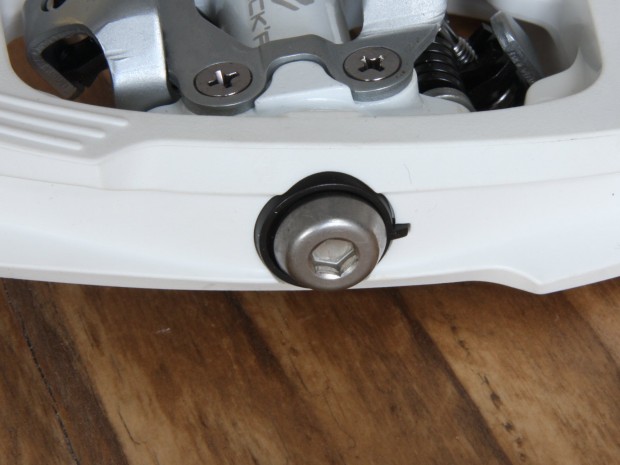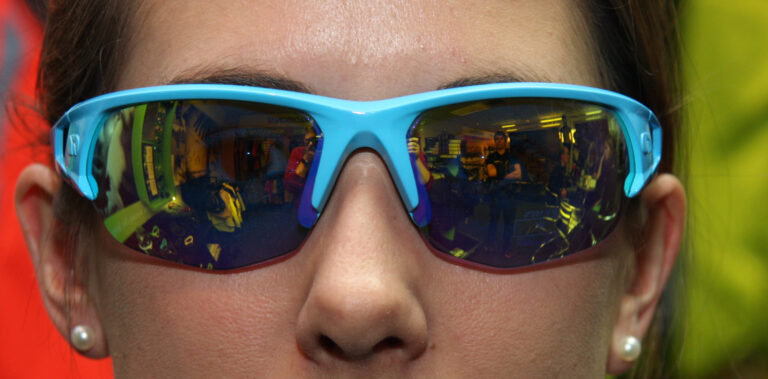Or: How I overcame my fear of clipless pedals and learned to love being attached to the bike with metal and springs. By Aoife Glass
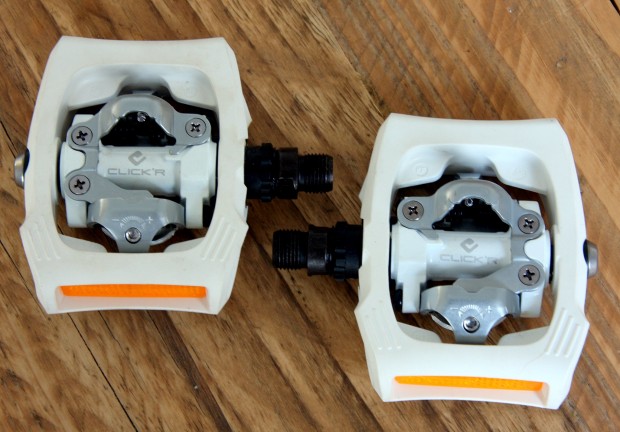
I’ve been a regular commuter, weaving my way through London traffic, for about five years now, and a regular mountain biker for three and a bit. I’ve always used flat pedals. Partly it’s the fear of the sideways fall that put me off trying cleats, partly how it would it affect my ride.
I’ve never had any problems with grip. Five Ten shoes and DMR Vault pedals with steel pins have kept me glued in place just fine, thank you very much.
But I’ve always been curious about cleats. The new Shimano Click’R pedals promise to be perfect for clipless pedal newbies, so let’s give them a go.
Setting out on the clipless voyage of discovery, my main questions were:
- Am I going to fall off sideways because I can’t unclip?
- Are my feet going to unclip and slip off at inconvenient moments?
- How is this going to affect my ride?
Step one: in my living room. As advised by Chris Garrison’s article on learning to use clipless pedals I tried clipping and unclipping while leaning against the wall, and pedalling backwards a little. All seemed fine. I was surprised at how easy it was to unclip, actually.
Step two: on the road. I opted for a quiet street, avoiding rush hour, so I didn’t have to think too much about oncoming traffic, clipping and unclipping up and down the road, and trying to practice sudden stops.
Step three: on the trail. Somewhat geographically constrained by a broken car, I opted for the red and blue routes round Leigh Woods and Ashton Court in Bristol.
In answer to my own questions:
Clipping in was easy once I got the hang of it. Just putting my foot on the pedal where I would naturally put it and applying pressure seemed to do the trick. You hear a little click when the cleat engages. The platform meant that even if I hadn’t managed to click in perfectly, I still had plenty of contact to continue pedalling.
The pedal is double sided, so I didn’t need to fiddle around trying to find the right side when starting off again, and the mechanism is raised. This is particularly useful on a trail or busy road, when you don’t want to be looking down at your feet.
The Click’R pedals are super-easy to unclip from. A Dorothy-like twist of the heel and I was free. I tried a few faux emergency yanks and they disconnected easily too. At no point did I feel stuck. This included chickening out at the top of a trail feature, and therefore needing to rapidly place one foot on the ground.
There’s a nice amount of float with these pedals so I had some side to side movement of my foot before it unclipped, which was quite comfy for commuting and mountain biking.
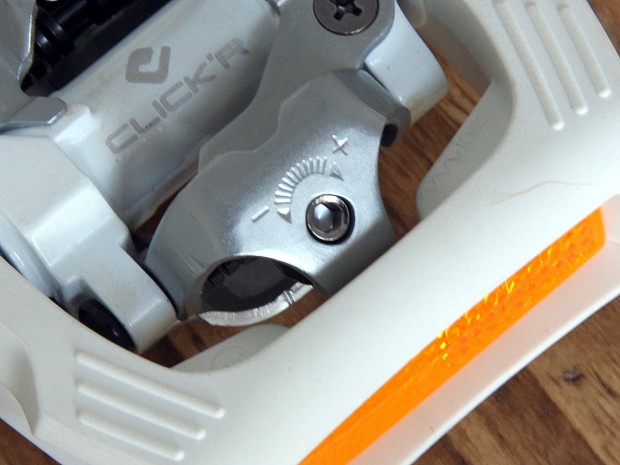
I did inadvertently unclip a couple of times. I tend to throw my knee out when cornering on my mountain bike (I’m not sure this is a recognised technique) and this caused my foot to twist enough to release. Again, because of the wide platform, this didn’t affect my contact with the pedal but it did throw my concentration a little. However, it’s fairly simple to adjust the tension on the spring to make it a little harder to unclip, and this solved the problem. No issues down juddery rock gardens or little rock drops, or stand-up pedalling up hills.
Being clipped in did change my riding, but for the better. I tend to put my feet down a lot, especially on tricky tight corners. Being clipped in meant I attempted them properly, with the reassurance I could unclip if I wanted to. To go with the pedals, I got some shoes with stiffer soles and that meant my feet were less sore after pedalling for several hours, a definite plus.
Result: If you want to give clips a go, then these are great ones to start with. Easy to clip into and out of, plenty of support from the pedal platform, they are perfect for beginners and for commuters. I’ll be using mine for commuting, on a three-day touring trip, and also out on my local trails.
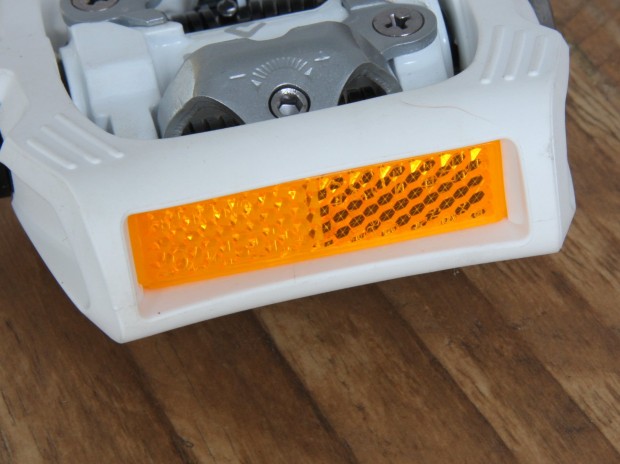
The cleats are attached by two small bolts, which opens up a huge rage of shoe options – road shoes, touring shoes, mountain bike shoes, and rather cool urban commuter shoes like those made by DZR. If you find you get on with Click’R pedals, then you may want to eventually progress on to more road or mountain bike specific pedals.
Verdict
I was worried about using clipless pedals, but the ease of both entry and release offered by the Click’R pedals makes them a doddle. Being able to use stiffer shoes and being properly attached to the bike definitely enhances your riding.
Who’s it best for?
Anyone who’s nervous about trying clipless pedals, whether you’re a beginner cyclist or a more experienced rider who has only ever used flats.
Pros
– Easy entry and release
– Adjustable release force
– Built-in reflectors for urban riding
– Good quality Shimano bearings
Cons
– Plastic body looks vulnerable to rock strikes
Weight: 507g
Price: £39.99
UK supplier: Madison Cycles
What Shimano says about the T-400 Click’R pedals
Lighter spring for simple entry and release
Pop-up cage for easier step in
Integrated reflector
Adjustable entry and release tension settings
Chrome-moly spindle and low maintenance sealed bearing cartridge axle
SM-SH56 multi directional release cleats included
Like this? These articles will be useful too!
The Demystifier: Everything You Need to Know About Pedals
Beginners: Pros and Cons of Flats vs Clipless Pedals for Mountain Biking
Nerd notes
Shimano also says the release tension of Click’R pedals is up to 60 percent less than a standard SPD pedal. This makes them much easier to get out of.
Shimano makes two versions of cleats for SPD pedals, and the Click’R pedals come with the ‘Multi-Release’ cleats. These allow you to get out of the pedals by twisting, as standard, and also by peeling your feet sideways, which feels an awful lot like getting out by pulling up, even though it’s not quite the same thing.
Finally, if you’re wondering why pedals that you clip into are called clipless pedals, it’s because pedals used to have straps to hold your foot in place, and a metal clip to hold the strap. Pedals with spring-loaded mechanisms were called ‘clipless’ to differentiate them and to confuse people ever after.
